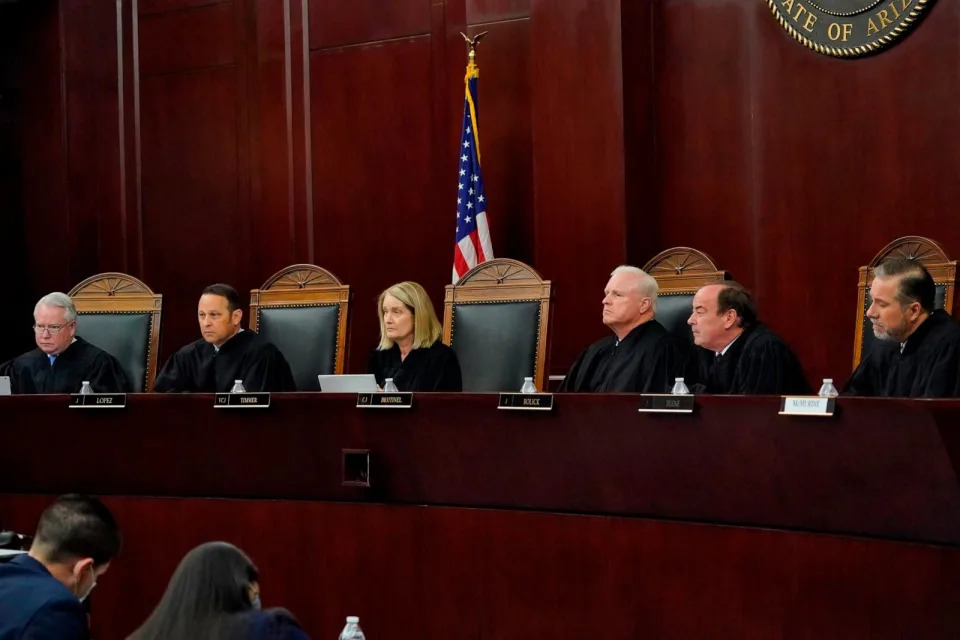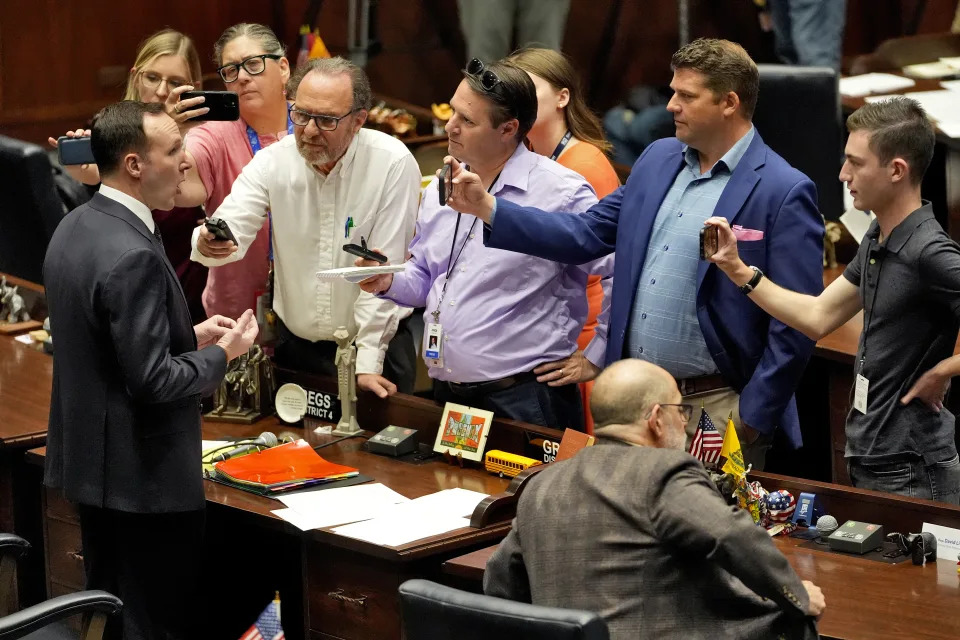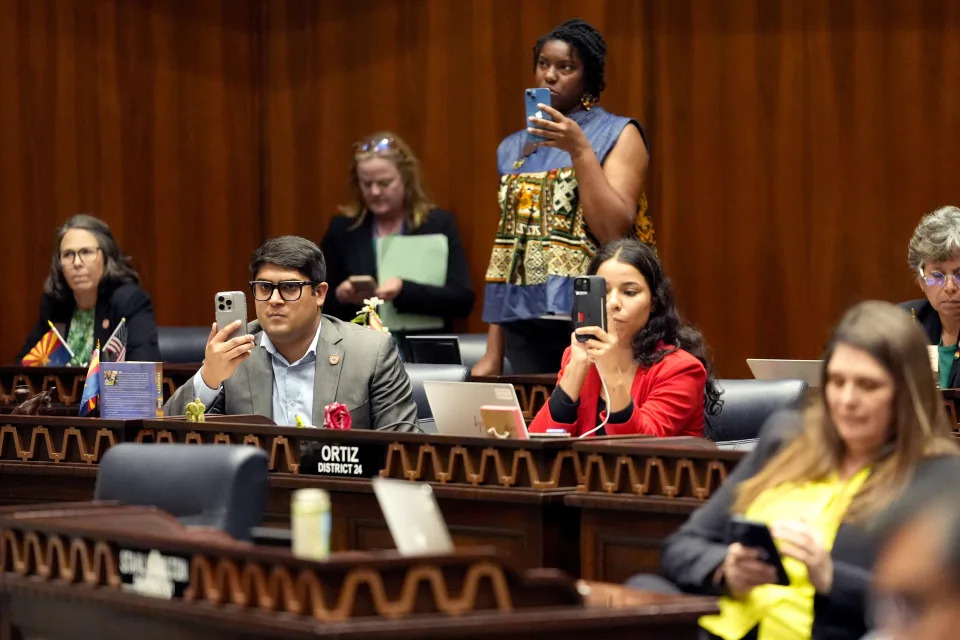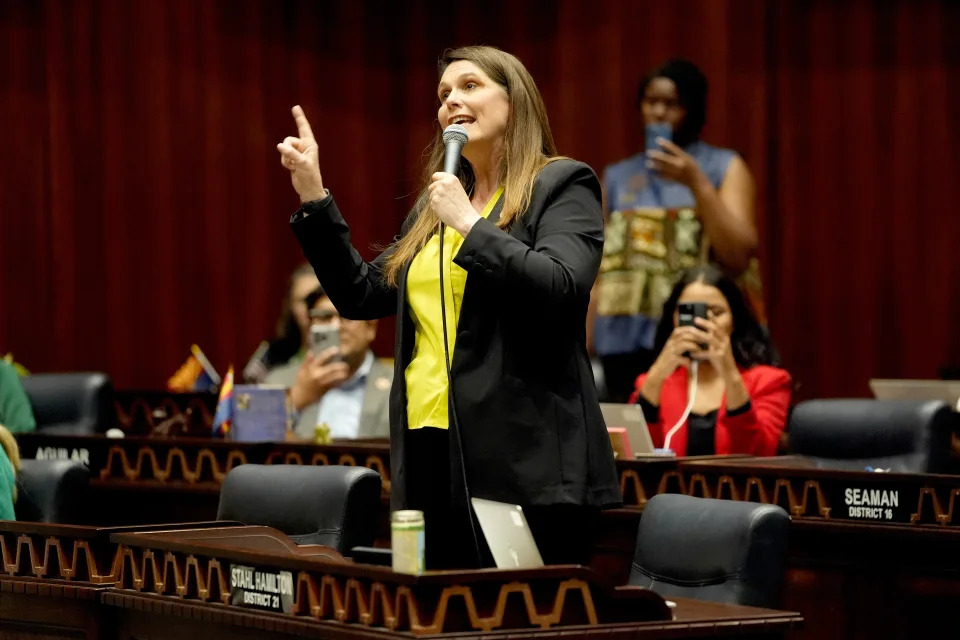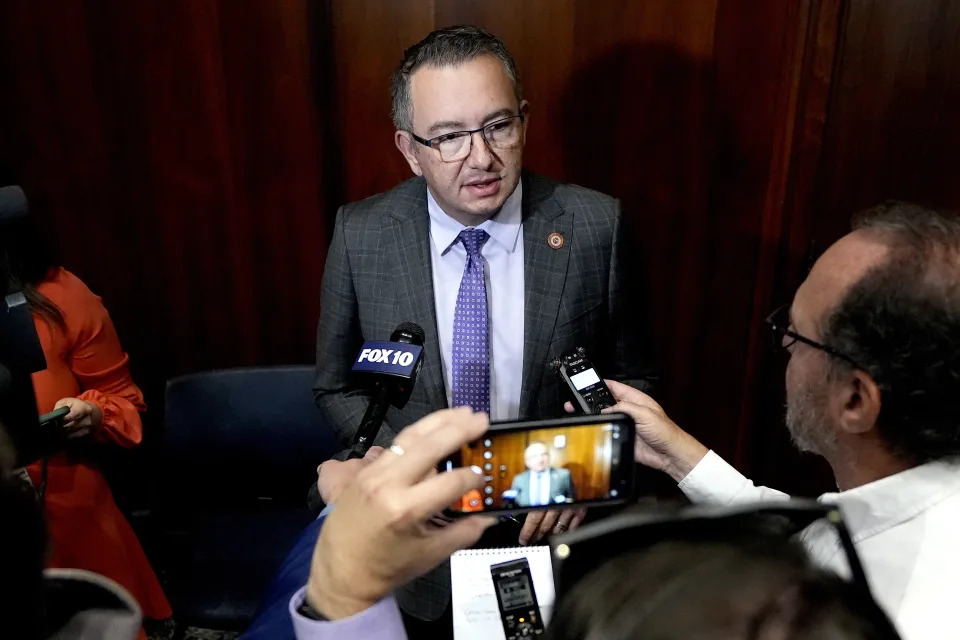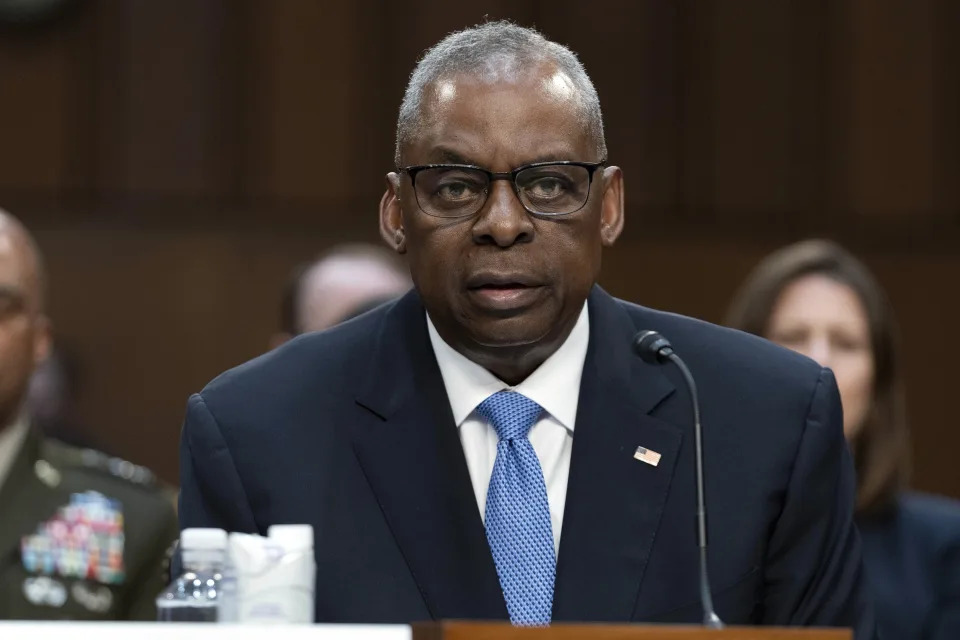CNN
Trump is recreating his web of chaos at home and abroad in a preview of what a second term could look like
Analysis by Stephen Collinson, CNN – April 10, 2024

Some top Democrats worry that Americans have forgotten the chaos that raged every day Donald Trump was president, and that voters’ faded recall of the uproar will end up handing him a second term.
The presumptive GOP nominee is, however, doing a good job of jogging memories as he blazes a trail of disruption through Congress, immigration and national security policy, reproductive health care and the nation’s top courts.
After storming to the Republican nomination, Trump is again the epicenter of controversy. His volatile personality, loyalty tests, rampant falsehoods, thirst to serve his political self-interest and the aftershocks of his first term are compromising attempts to govern the country. And the election is still seven months away.
Many of today’s most intractable conflicts in US politics can be traced to Trump and the turmoil that is an essential ingredient of his political appeal to base voters who want Washington and its rules ripped down – no matter the consequences.
Events this week – and over the first three months of this year – illustrate how much Trump has shaped the political tumult:
— On Wednesday, House Speaker Mike Johnson suffered another stunning defeat, further gutting his authority, after hard right GOP members blocked a bill to reauthorize a critical surveillance spying program at Trump’s behest.
— Another measure critical to America’s capacity to wield its global power and its international reputation – a $60 billion arms package for Ukraine – is still going nowhere. Trump ally Rep. Marjorie Taylor Greene is threatening to topple Johnson if he dares to pass it.
— Nationwide chaos is, meanwhile, spreading in the wake of the Trump-built Supreme Court conservative majority overturning Roe v. Wade in 2022. In the latest stunning twist, Arizona is about to revert to a near total Civil War-era abortion ban.
— Bipartisan efforts to solve a border crisis are in tatters after Trump’s House followers in February killed the most sweeping and conservative bill in years. The ex-president appeared to want to deprive President Joe Biden of an election-year win and to continue his searing claims that America is being invaded by undocumented migrants he calls “animals.”
— Some of the nation’s top courts are being tied in knots by Trump’s incessant, and often frivolous, appeals as he desperately tries to postpone the shame of becoming the first ex-president to go on criminal trial. His unchained social media posts may be coming perilously close to infringing a gag order ahead of his hush money trial beginning Monday.
— The Supreme Court will later this month wrestle with Trump’s claims of almost unchecked presidential power – a constitutional conundrum that no other president in two-and-a-half centuries of American history ever raised. The suit is largely a ruse to delay his federal election interference trial – and it is working.
Trump’s entanglement in some of the most intense political storms rocking Washington, and reverberating even beyond US shores, offers fresh evidence of his power – expressed through his capacity to make key elements of the Republican Party bend to his will. It highlights his mercurial personality and a political style that relies on instinct rather than long-term strategy. And it is leaving no doubt that the mayhem that burst out of the Oval Office during his administration would return at an even more intense level if he gets back there in 2025.
Trump delivers a blow to Johnson – then invites him to Mar-a-Lago
Trump dispensed his orders to his acolytes in the House with the words “Kill FISA” on his Truth Social network.
The former president was referring to the Foreign Intelligence Surveillance Act, which national security officials say is critical to allowing espionage agencies to listen to communications of suspected terrorists and US adversaries. Some of those key powers need to be reauthorized by Congress by the middle of the month.
Critics of the law, including some civil liberties groups and some conservatives, argue that Section 702 of the act, which allows the surveillance of foreigners outside the US, is unconstitutional because sometimes Americans in contact with those targets get swept up in the net. But Trump is bent on vengeance against the FBI over its investigation into contacts between his 2016 campaign and Russia. He claimed in a social media post that FISA was “ILLEGALLY USED AGAINST ME, AND MANY OTHERS. THEY SPIED ON MY CAMPAIGN!!!”
On Wednesday, 19 Republicans – including some of Trump’s loudest backers in the House – bucked Johnson and voted with Democrats to block consideration of the bill, dealing yet another blow to the speaker’s fast-ebbing authority and provoking a potential national security crisis.
Bill Barr, Trump’s former attorney general, told CNN’s Annie Grayer on Wednesday that the actions of his former boss and allies were “a travesty and reckless.” Barr argued that the ex-president was being driven by “personal pique rather than rationality and sound policy.” He said Trump’s complaints about the investigation into his 2016 campaign had nothing to do with the FISA section that needs to be reauthorized. And in a chilling warning, Barr accused the ex-president of putting US national security at risk. “We’re faced with probably the greatest threat to the homeland from terrorist attack and our means of defending against that is FISA. And to take that tool away, I think, is going to result in successful terrorist attacks and the loss of life,” he said.
Johnson’s latest humiliation came as he’s fighting for his job on another front. He held tense crisis talks on Wednesday with Greene, who is threatening to call a vote to oust him. The speaker may be the most conservative person to ever hold his job, but the Georgia lawmaker is accusing him of becoming a Democrat in all but name. Johnson’s crime was to keep the government open by passing budget bills and his consideration of the delayed Ukraine funding, which is also opposed by the former president.
“If he funds the deep state and the warrantless spying on Americans, he’s telling Republican voters all over the country that the continued behavior will happen more, spying on President Trump and spying on hundreds of thousands of Americans,” Greene told CNN’s Manu Raju on Wednesday. She added: “The funding of Ukraine must end. We are not responsible for a war in Ukraine. We’re responsible for the war on our border, and I made that clear to Speaker Johnson.”
Trump’s role in these two issues that threaten to bring Johnson down make it all the more curious that the speaker plans to travel to Mar-a-Lago on Friday to hold a joint news conference with the Republican presumptive nominee.
Johnson badly needs Trump to wield his influence with the restive GOP majority if he is to survive. And his pilgrimage to the Florida resort will make a strong statement about who really runs the House majority. There is a clue to a potential quid pro quo in the announced topic of their press conference – “election integrity.” That’s the code in Trump’s world for false claims that the 2020 election was stolen from him.
Johnson was a prominent purveyor of falsehoods about a stolen election and his continued willingness to buy into them might be the price for securing Trump’s support now.
Ukraine’s future may depend on the speaker sacrificing his future
Trump’s transformation of the GOP from a party that used to laud President Ronald Reagan’s victory over the Kremlin in the Cold War to one that often seems to be fulfilling Russian President Vladimir Putin’s foreign policy goals is striking.
The GOP’s blockade of more funding for Ukraine threatens America’s global authority and reputation as a nation that supports democracies and opposes tyrants like a Russian leader who is accused of war crimes. Ukrainian President Volodymyr Zelensky has warned that the war will be lost if the US arms don’t arrive. He told CNN’s Frederik Pleitgen on Wednesday that “what we have now is not sufficient. If we want to truly prevail over Putin.”
A few hours later, Gen. Christopher Cavoli, commander of US European Command, backed up Zelensky’s warnings. “If one side can shoot and the other side can’t shoot back, the side that can’t shoot back loses. So the stakes are very high,” Cavoli told the House Armed Services Committee.
Yet Trump has vowed to end the war in 24 hours if he wins a second term. That can only happen one way – by Zelensky giving territorial concessions to Putin, who launched an illegal invasion and to whom the former US president has often genuflected.
News that Johnson is heading to Mar-a-Lago is yet another reason for US supporters of Ukraine to worry.
Abortion chaos
One of Biden’s goals is trying to remind suburban, moderate and independent voters who may be alienated by Trump’s constant chaos how disorientating life could be when he was president.
That’s one reason why the Biden campaign has seized on the fallout of the Supreme Court’s overturning of Roe v. Wade to highlight the pandemonium that can result from Trump’s leadership.
The overturning of the nationwide constitutional right to an abortion was based on the reasoning that state legislatures that are closer to the people than the judiciary are the appropriate place for such a divisive moral question. In an ideal world or a political vacuum, that might be the case. But the decision took little account of the corrosive polarization of America’s politics and the result has been a confusing patchwork of state laws and court decisions. Many patients are being deprived of vital health services – for instance after miscarriages. Some IVF fertility treatments have been stopped in Alabama, for example, and the Supreme Court has been forced to consider an attempt to halt nationwide access to a widely used abortion pill.
Anti-abortion campaigners are, meanwhile, pushing hard for total state and national bans on the procedure while abortion rights advocates are seeking to inject the issue into key election races — with significant recent success in even some red states.
Trump this week tried to defuse the growing threat to his campaign from his and the conservative Supreme Court majority’s handiwork, insisting he’d leave the issue to the states. His damage control effort didn’t even last 24 hours. The Arizona Supreme Court’s decision to reinstate a 160-year-old ban triggered a backlash that went right back to the former president.
Trump had another go on Wednesday, pledging that he wouldn’t sign a federal ban on abortion as president – as many conservatives are pushing him to. But given how many times he’s shifted his position on the issue, it’s hard to know what he really thinks.
For once, Trump could end up being the chief victim of the chaos he wreaks.



